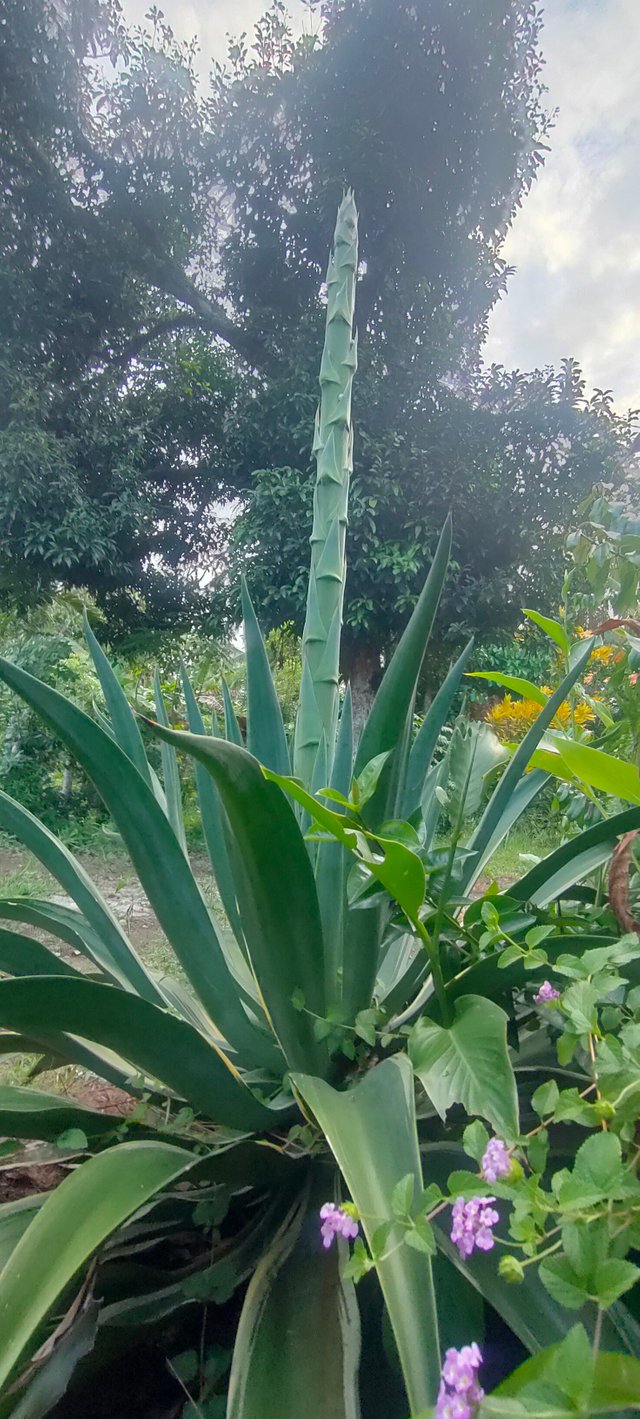Agave Flower
Hello all steemit friends, meet again with me @jayalom. At this meeting I will discuss Agave flowers

The agave flower is one of the most fascinating aspects of the agave plant, known for its unique life cycle. Agave belongs to the Asparagaceae family and consists of over 200 species, most of which are native to desert regions in Mexico and the southwestern United States. Here is a detailed explanation of the agave flower:

Physical Characteristics of the Agave Plant.
Agave is a succulent plant with thick, fleshy leaves arranged in a rosette pattern, often equipped with sharp spines along the edges and tips. These leaves serve as water storage organs, crucial for the plant’s survival in its dry native habitat.Monocarpic Life Cycle.
One of the unique features of agave is its Monocarpic nature, meaning the plant flowers only once in its lifetime. Most agave species take many years to bloom, sometimes up to 10 to 30 years, depending on the species and growing conditions. Some species may bloom faster, while others take even longer.
Once mature, the agave will send up a tall flower stalk that grows rapidly from the center of the rosette. This stalk can reach several meters in height, depending on the species. Agave flowers are often very striking, with colors ranging from yellow to red, and these flowers typically produce nectar that is highly attractive to bats, hummingbirds, and insects as their main pollinators.

Flowering Process.
The flowering process begins when the plant has accumulated enough energy to produce a flower. The flower stalk grows rapidly within weeks, utilizing the energy stored in its succulent leaves. The flower consists of many small clusters, and each bloom can produce seeds after pollination.Pollination.
Agave flower pollination is typically done by bats, insects like bees, hummingbirds, or even the wind. Bat pollinators, especially long-nosed bats and leaf-nosed bats, play a crucial role in pollinating agave, especially at night. Some species of birds and insects also assist in pollination during the day.

After Flowering
After the agave flower blooms and seeds are produced, the parent plant usually begins to die. This happens because the plant has exhausted all the energy it accumulated over the years for the flowering and seed production process. However, agave can produce offspring or shoots around it as a way to continue its lineage.Human Uses.
Several species of agave, particularly Agave Tequilana(the plant used to make tequila), are well-known for their use in producing alcoholic beverages such as Tequila and Mezcal. In addition, the fibers from some agave species, like Agave sisalana, are used to make products like ropes and fabrics. Aside from industrial uses, nectar from agave flowers can be harvested and processed into a natural sweetener commonly known as Agave syrup.Growing Conditions.
Agave thrives best in dry areas with full sunlight and well-draining soil. They are highly resilient in harsh environments due to their succulent nature, which allows them to store large amounts of water in their leaves. However, agave can also be grown in subtropical areas or even indoors, provided it receives enough light and the soil is kept from becoming too wet.

Conclusion
The agave flower is one of the most captivating aspects of this plant due to its long life cycle and dramatic flowering process. The flower is not only intriguing from an aesthetic and ecological perspective but also holds cultural and economic significance in several communities in Mexico and other countries. After flowering, while the parent plant dies, the shoots or offsets that emerge from its base ensure that agave continues to thrive for generations to come.
Good all steemit friends, maybe this is just a little of my explanation about the Savage flower. Success always for steemit